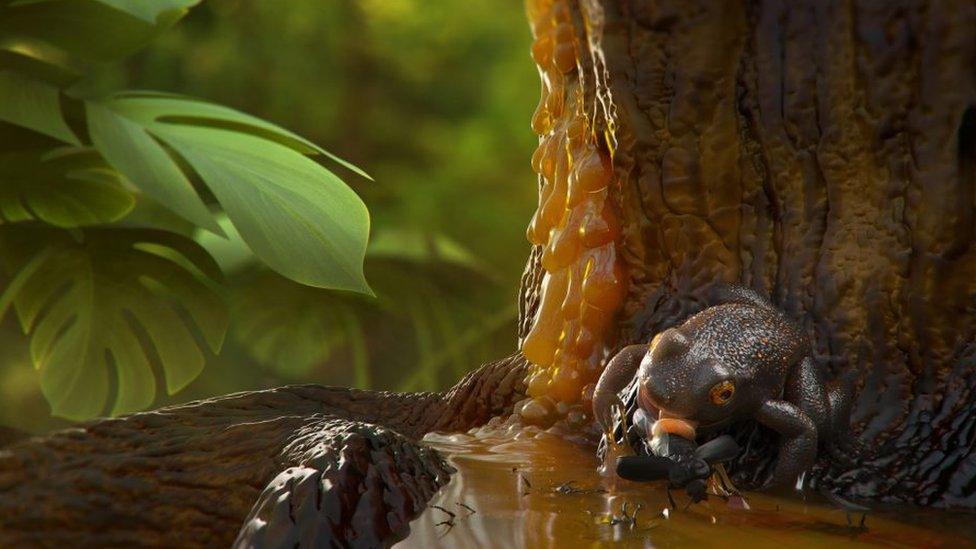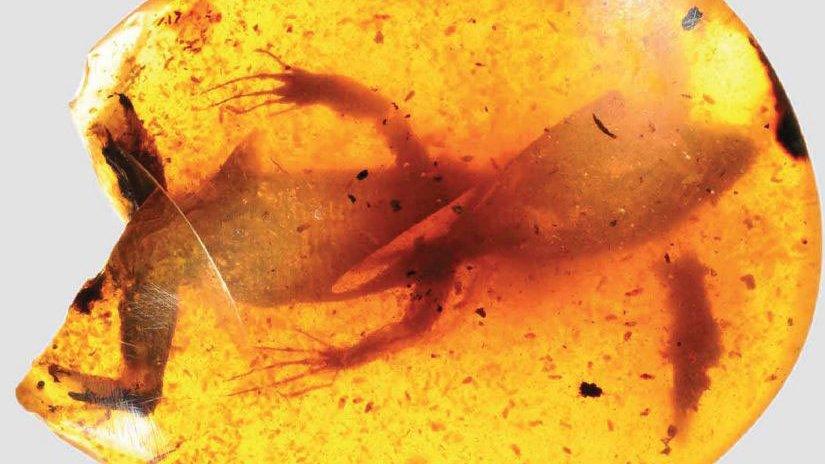Prehistoric frogs in amber surface after 99 million years
- Published

The frogs are tiny, at about 2cm in length
Frogs trapped in amber for 99 million years are giving a glimpse of a lost world.
The tiny creatures have been preserved in sticky tree resin since the end of the Age of the Dinosaurs.
The four fossils give a window into a world when frogs and toads were evolving in the rainforests.
Amber from Myanmar, containing skin, scales, fur, feathers or even whole creatures, is regarded as a treasure trove by palaeontologists.
Dr Lida Xing of China University of Geosciences in Beijing said it was a "miracle" find.
"In China, frogs, lizards and scorpions are called three treasures of amber," he told BBC News.
"These amber fossils provide direct evidence that frogs inhabited wet tropical forests before the mass extinction event at the end of the Cretaceous."

What the frog might have looked like
The fossil record of the earliest amphibians is sparse, which makes the discovery particularly valuable for science.
Dr David Blackburn of the University of Florida, who worked on the fossils alongside Dr Xing, said being small and living in a tropical forest makes the likelihood of ending up in the fossil record "pretty low".
"Frogs have been around on earth for approximately 200 million years," he said.
"How long have they been associated with these wet forests? Is it a recent phenomenon or an ancient one? These amber frog fossils indicate that this association extends back to at least 100 million years ago."
New piece of the puzzle
The four specimens provide a record of life in the forests of what is now Kachin State, Myanmar during the Cretaceous.
As well as the frogs, which the researchers have named Electrorana limoa, they found plants, spiders and insects.
There were even marine molluscs, suggesting frogs lived in a humid, warm, tropical forest ecosystem that contained freshwater lakes.
Dr Ricardo Perez-De-La Fuente, of the Oxford Museum of Natural History, who is not part of the research team, said every new finding adds a piece to the puzzle.
"The new frog species is a relevant piece of this exciting puzzle, a potential top predator of the fossil insects that my colleagues and I so passionately study," he said.
Electrorana has similarities to modern frogs and toads, including fire-bellied toads and midwife toads.
Full details are published in the journal Scientific Reports, external.
Follow Helen on Twitter, external.
- Published5 February 2018

- Published12 December 2017

- Published4 March 2016
